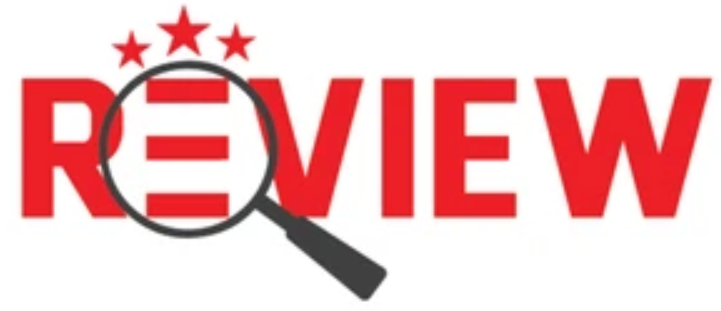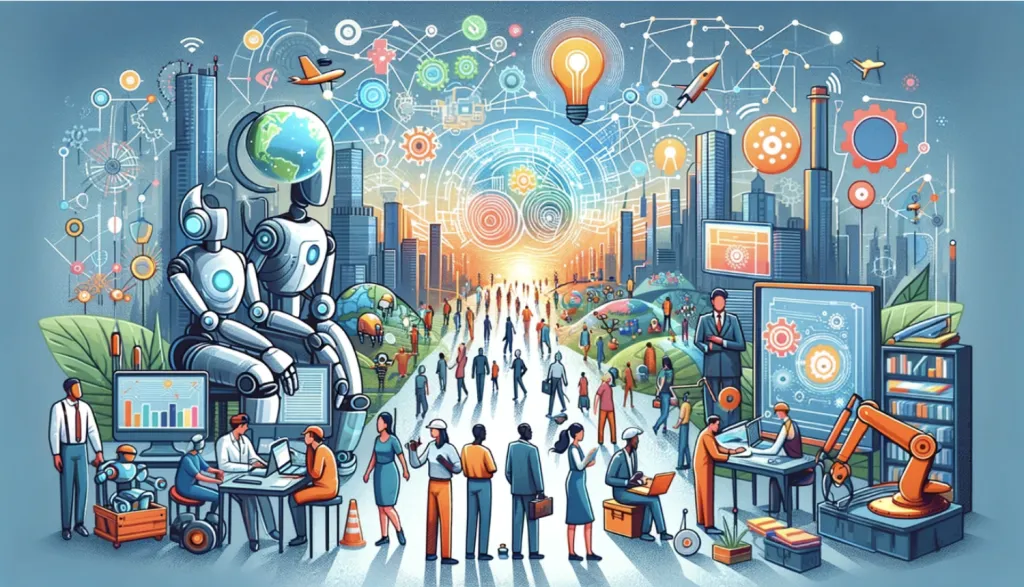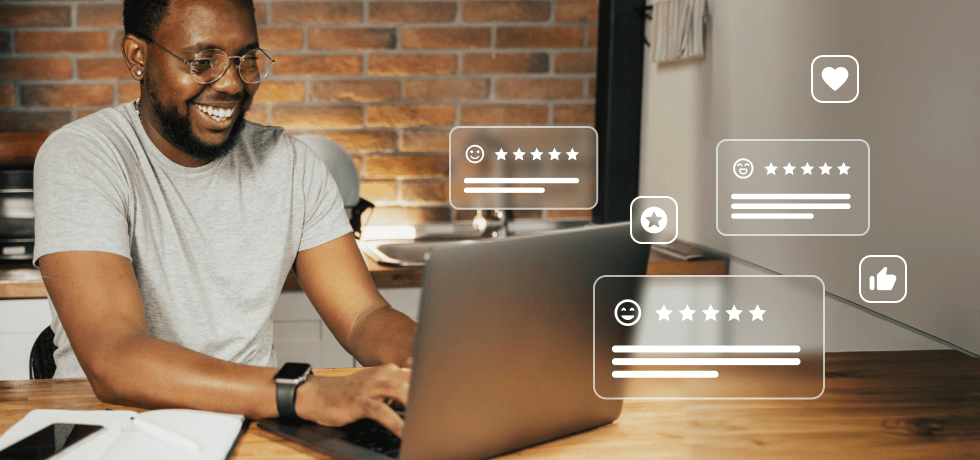Artificial Intelligence (AI) is no longer a futuristic concept—it’s a defining force reshaping how we live, work, and think. Once confined to research labs and sci-fi stories, AI is now embedded in every aspect of our daily and professional lives. From automating routine tasks to driving strategic decision-making, AI is transforming industries at an unprecedented pace.
This article explores how AI is changing the future of work, the opportunities and challenges it brings, and how individuals and organizations can adapt to thrive in this new era.
1. The Evolution of AI in the Workplace
The use of AI in business started with simple automation — think data sorting, email filters, and chatbots. But in recent years, AI has evolved dramatically, enabling systems to learn, reason, and make decisions independently.
With the rise of machine learning (ML), natural language processing (NLP), and generative AI, today’s AI can understand complex patterns, generate original content, and even simulate human reasoning. Companies like Google, Microsoft, and OpenAI have paved the way, making AI accessible to businesses and individuals worldwide.
In 2025, AI isn’t just a productivity booster — it’s a strategic partner in innovation.
2. Key Areas Where AI is Transforming Work
a. Automation of Repetitive Tasks
AI is revolutionizing the way businesses handle repetitive, time-consuming activities. Administrative work, scheduling, payroll management, and even customer support can now be managed by intelligent automation tools.
For example:
- Chatbots handle customer inquiries 24/7.
- Robotic Process Automation (RPA) handles data entry and report generation.
- AI-based HR tools automate resume screening and candidate selection.
This automation reduces operational costs, minimizes human error, and frees up employees for more creative and strategic work.
b. Decision-Making and Data Analytics
Modern AI systems can analyze massive amounts of data and generate actionable insights faster than any human. Through predictive analytics, businesses can:
- Forecast market trends
- Anticipate consumer behavior
- Optimize pricing strategies
- Detect fraud or anomalies
AI-driven data analysis allows managers to make evidence-based decisions rather than relying solely on intuition.
c. AI in Creative and Knowledge Work
The rise of Generative AI tools (like ChatGPT, DALL·E, and Midjourney) has blurred the boundary between human creativity and machine intelligence. These tools can:
- Write blog posts, articles, and marketing copy
- Generate code and debug software
- Create images, videos, and music
- Design product prototypes
While they don’t replace human creativity, they enhance it — helping creators work faster, brainstorm better, and execute more efficiently.
d. Human Resources and Recruitment
AI is reshaping how companies hire and retain talent. Tools powered by machine learning can screen thousands of applications within minutes, identifying candidates whose skills match job requirements.
AI can even analyze candidate facial expressions or tone in interviews (though this remains controversial) and help predict employee turnover.
Additionally, AI-driven performance analysis tools allow companies to track productivity, engagement, and satisfaction — enabling a more dynamic, data-driven workplace culture.
e. Customer Experience and Personalization
AI-powered systems have revolutionized how companies engage with customers. Algorithms now personalize experiences by analyzing user behavior, purchase history, and preferences.
Examples include:
- Netflix’s AI recommending what to watch next
- Amazon suggesting related products
- Spotify curating custom playlists
In the workplace, this level of personalization is extending to employee experience — from adaptive training programs to mental well-being support via AI assistants.
3. The Impact on Jobs and Skills
Perhaps the most discussed aspect of AI’s rise is its impact on employment. It’s undeniable that AI will replace certain jobs — particularly those involving repetitive, predictable tasks. However, it will also create new jobs that didn’t exist before.
a. Jobs at Risk
According to studies by the World Economic Forum, millions of roles in administration, data entry, telemarketing, and manufacturing are at high risk of automation. Machines can perform these tasks faster, more accurately, and without fatigue.
b. Jobs Being Created
At the same time, new opportunities are emerging in:
- AI engineering and development
- Prompt engineering
- Data science and analytics
- AI ethics and compliance
- Human–AI collaboration design
These new positions require creativity, adaptability, and technical understanding.
c. The Skills of the Future
To stay relevant, workers must focus on skills AI cannot easily replicate:
- Critical thinking
- Emotional intelligence
- Complex problem-solving
- Creativity
- Ethical judgment
The future workforce will need to collaborate with AI, not compete with it.
4. The Human–AI Collaboration Model
Instead of replacing humans, AI is becoming a co-pilot — a partner that amplifies human capabilities.
For instance:
- Writers use AI to brainstorm ideas or summarize information.
- Doctors use AI to analyze medical images and predict diagnoses.
- Teachers use AI to tailor lessons for individual learning styles.
- Designers use AI to generate initial drafts or visual concepts.
This collaboration allows professionals to spend more time on creative, strategic, and empathetic tasks — things that make us distinctly human.
5. Challenges and Ethical Concerns
The rapid adoption of AI also raises critical questions around ethics, bias, and accountability.
a. Data Privacy and Security
AI systems often require vast amounts of personal data to function effectively. Misuse or breaches of this data can lead to privacy violations and loss of trust.
b. Algorithmic Bias
If the data used to train AI systems is biased, the outcomes will be too — leading to unfair or discriminatory results in hiring, lending, or law enforcement.
c. Job Displacement
While AI creates new opportunities, it also disrupts traditional roles. Governments and organizations must invest in reskilling and upskilling initiatives to prevent large-scale unemployment.
d. Ethical Use and Transparency
As AI makes more decisions on our behalf, there must be clear accountability. Companies should disclose how AI models make decisions and ensure they align with human values.
6. Preparing for the AI-Powered Future
Both individuals and organizations must adapt to harness AI effectively. Here’s how:
a. For Individuals
- Invest in lifelong learning: Embrace online courses in AI literacy, coding, or data analytics.
- Develop soft skills: Communication, empathy, and leadership will always remain valuable.
- Experiment with AI tools: Familiarize yourself with tools that can boost your productivity and creativity.
b. For Businesses
- Adopt responsibly: Use AI ethically, transparently, and in alignment with company values.
- Reskill employees: Provide AI-related training to help staff transition into new roles.
- Encourage innovation: Build a culture that embraces experimentation and technological curiosity.
7. The Global Perspective: AI and Economic Shifts
AI’s impact isn’t uniform across the globe. Developed nations with advanced infrastructure are seeing rapid AI adoption, while developing economies are still catching up. However, this presents unique opportunities — especially for emerging markets like South Asia and Africa — to leapfrog traditional industrial barriers.
Remote work, AI-driven startups, and cross-border collaboration now allow skilled professionals from anywhere to participate in the global digital economy.
In this new era, talent matters more than location.
8. The Future Outlook: What Lies Ahead
The next decade will redefine the very concept of “work.” AI will continue to evolve, becoming more intuitive, multimodal, and autonomous. Some trends to watch:
- Hyper-personalized workplaces — AI tailoring every employee’s workflow
- Autonomous organizations — businesses partially managed by AI agents
- AI mentors and digital colleagues — embedded support for daily decisions
- Regulated AI ethics frameworks — ensuring responsible innovation
The question is no longer “Will AI change work?” but rather “How can we shape that change for good?”
Conclusion
Artificial Intelligence is transforming the future of work — automating routine tasks, enhancing creativity, and reshaping global industries. While it poses real challenges around ethics, privacy, and employment, it also offers immense opportunities for growth, innovation, and efficiency.
The key to success lies in adaptation and collaboration.
Humans and machines working together — leveraging the best of both worlds — can build a smarter, fairer, and more sustainable future.
The future of work isn’t about man versus machine.
It’s about man with machine.



